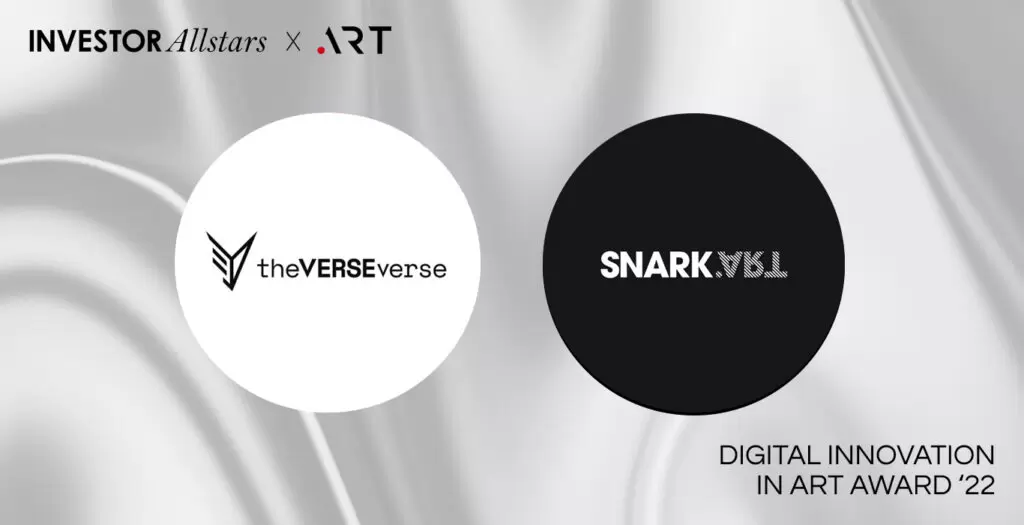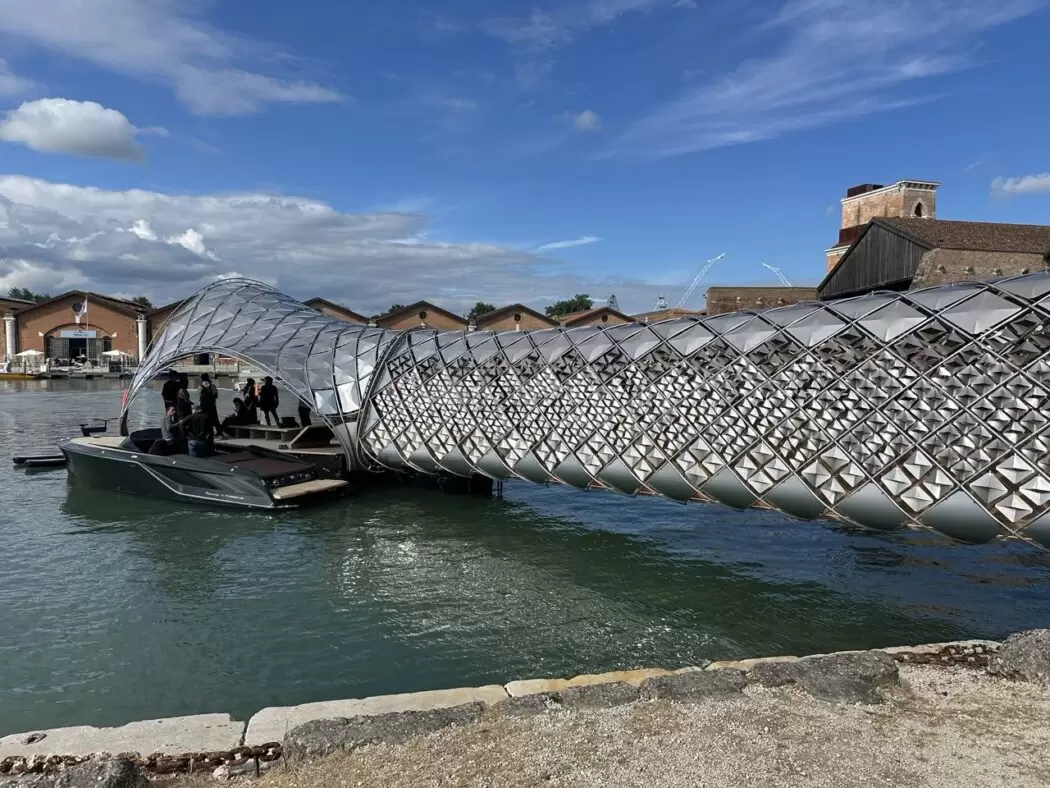The .Art Art Market Recap: Major Grants Given, Superb Archeological Discoveries Unearthed, Socio-Politics Impacting the Art World, and New NFT Innovations
This week we have it all! Covering the biggest Philanthropic Grants, Archeological Finds, Biennale Drama, NFT News and more


Featured image: The exhibition “Abstract Climates: Helen Frankenthaler in Provincetown,” at the Parrish Art Museum, Water Mill, N.Y.
In a second round of major funding the Helen Frankenthaler Foundation is giving $3m in grants under the Frankenthaler Climate Initiative for environmental projects to 49 US art organizations. The grants are intended for the development and implementation of projects designed to reduce carbon emissions and energy consumption at the 49 organizations.
“The first round of FCI’s funding helped museums actualize climate neutrality commitments, prepare for and respond to climate-driven disasters, and create avenues to achieve long-term operational sustainability, among other key goals,” Frankenthaler Foundation chair Lise Motherwell says in a statement. “This second phase expands our reach and impact by advancing current projects in development and providing a new roster of visual art institutions with the support needed to meet their climate goals.”
The institutions include the Museum of Modern Art to help develop its cold storage vault, supporting the construction of a thermal envelope of high-efficiency glass at the Pittsburgh Glass Center, installing solar systems at the Storm King Art Center in upstate New York, and assisting preservation and conservation projects at the Cleveland Museum of Art and Yale University Art Gallery, among others. Additional institutions benefitting from the grants include the Museum of Contemporary Art in Los Angeles, the Judd Foundation, Philadelphia Contemporary, the Museum of Fine Arts in Houston and the Center for Curatorial Studies at Bard College.
“Our goal with this second grant-making cycle of the Frankenthaler Climate Initiative is to motivate individuals across the arts sector—art students to curators to museumgoers—to be change-makers, actively working to counter the most imminent and palpable threat facing our planet and existence,” Frankenthaler Foundation president Fred Iseman says in a statement. “They say ars longa – vita brevis, but vita is getting shorter.”

Gold rings found among prehistoric Romanian grave.
COURTESY THE ŢĂRII CRIŞURILOR MUSEUM, ORADEA, ROMANIA.
A rare and important discovery of 169 prehistoric gold rings occurred in Crișana, Romania after road construction revealed the find. The grave belonged to a woman from the Tiszapolgár culture whose hair would have been adorned with the rings. In addition to these rings, a multi-spiral copper bracelet, two gold beads, and roughly 800 beads made from bone were also uncovered.
“The gold hoard is a sensational find for the period, considering that all the gold pieces from the Carpathian Basin total around 150 pieces. Well, here there are over 160 in just one inventory,” Călin Ghemiş, the lead archaeologist of the dig, said at a press conference.
The Tiszapolgár culture, dating between 4500 BCE and 4000 BCE, was a Copper Age civilization among Eastern and Central Europe.
“We want to find out what kind of culture the person belonged to, and also whether the rings were made of gold from the Transylvanian Archipelago,” said Gabriel Moisa, director of the Museum of Ţării Crisurilor in Oradea, Romania. “It is a phenomenal discovery. Such a treasure no longer exists in Central and Eastern Europe,” Moisa added.
Archaeologists also uncovered traces of two dwellings near the town Sântandrei, with ceramics dating from between the 2nd century BCE and the 2nd century CE.

Frank Stella ,Geometry XXII, 2022. COURTESY OF ARSNL
The Artist Rights Society, an organization that helps artists with copyright and licensing, is inaugurating a new Web3 platform, Arsnl. The new platform will launch on September 9, 2022 with a series of NFTs by Frank Stella. Best known for brightly coloured minimalist paintings in the 1960s, Stella has also ventured into 3D printed sculptures in his practice. According to Katarina Feder, Arnsl’s founder and ARS’s vice president, “NFTs were the natural next step” for Stella.
“NFTs are exciting,” Stella said in an email to ARTnews. “We can build in resale rights; that’s something we’ve worked, rather fruitlessly, on for decades. It will be wonderful if technology can give us what the government never would.” With the purchase of a Stella NFT, the owner will also have the right to print the artwork.
Titled “Geometries” the 22 NFTs are grey 3D objects which include some of recent Stella designs. Offered in editions of 100, the works include instructions for 3D printing an unlimited number of sculptures in multiple sizes. “It’s an affordable and flexible way to own a Stella,” said Katarina Feder, Arnsl’s founder and ARS’s vice president. “If you want to spend $100 printing a small one for your desk or $100,000 printing it large for your lawn, you can do that.”

Sajjad Abbas, I Can See You, 2013, video, color, sound 5 minutes 3 seconds.
Three Iraqi artists, Raed Mutar, Sajjad Abbas, and Rijin Sahakian, have withdrawn their work from the Berlin Biennale in protest of an installation with blown-up photographs of detainee Abu Ghraib. Ghraib was held in a US Army detention facility for captured Iraqis from 2003 to 2006 that is tied to CIA torture programs, much like Guantanamo Bay. After the Biennale issued an apology, the artists felt the statement was more performative and did not sufficiently recognize the damage and trauma caused by allowing the exhibition of the painful image. The work in question, a 2013 piece called “Poison Soluble” by the French artist Jean-Jacques Lebel.
Rijin Sahakian stated in an open letter about the piece: “In an exhibition that prioritizes the display of wrongly imprisoned Iraqis photographed in the act of being sexually and physically tortured, no, we do not find sincerity or transparency in this paternalistic response.”
Layth Kareem, one of the Berlin Biennale artists who signed the open letter, publicly criticized Lebel’s work, saying, “I, as a simple human being, a person who was raised in Baghdad, who lived there for 24 years—I cannot allow myself, and I cannot imagine, seeing such pictures, using them and the pain, and turning them into an artistic work.” Lebel commented: “The aim of this project is to provoke the viewer to meditate on the consequences of colonialism.”
Sahakian read the work differently, writing, “There is nothing in the work that points to missing information, to anything we haven’t already seen. The images that flooded global media two decades ago only made visible the United States’ ability to move the world to hate and abuse the Iraqi body.”

A trigger warning for Lebel’s work was installed since the show opened. (courtesy Ali Yass)
London’s Saatchi Gallery has canceled an exhibition of Ukrainian contemporary art after a social media outcry that it was being organized by Russian banker and art collector Igor Tsukanov. The exhibition was to feature 100 Ukrainian artists at the gallery from September 3-11, accompanied by an auction of physical works and NFTs with claims that all proceeds will go to “charities in support of Ukrainian arts and culture, including the Art for Victory Fund and the Ukrainian Emergency Art Fund.”
“Saatchi Gallery was not the organizer or curator of The Ukrainian way There was also no direct communication with the artists or collectors,” the venue’s press office said in a statement to The Art Newspaper. The gallery had donated its space with the goal of “promoting Ukrainian artists and generating charitable funds for the benefit of Ukraine,” and its “involvement in the project was based on the involvement of key Ukrainian stakeholders,” she adds. “We received assurances from these stakeholders that they fully supported the project. When it was revealed that support from some of these key parties had been withdrawn, combined with reports of concerns expressed by artists over the past few days, the Saatchi Gallery immediately made the decision to cancel the ten-day exhibition and withdraw its support for the project .”

Promotional material for the cancelled show “The Ukrainian Way”. COURTESY SAATCHI GALLERY





